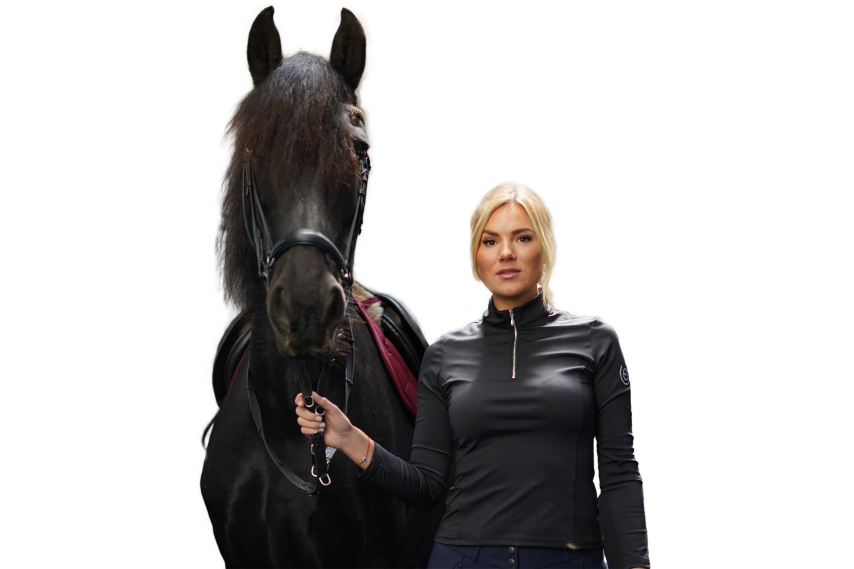Riding and the relationship with
the horse are very emotional matters, especially for young people. The
bond to the partner horse is high,
admiration and respect for the
riding instructor are great and the importance of time in the stable is immense. The loss of this world is absolutely unthinkable, especially for young people.
– Sophie Jahn

- Question the qualifications of the trainer. Find out whether the association or riding school deals with the problem in a preventive way. Further training, contact persons, and so on.
- Observe carefully how the trainer deals with the riding students. How they talk to each other and deal with physical closeness.
- Be with the children in the stable more often. Don’t just drop them off at the stable and pick them up again after the lesson.
- Listen to the children and take them seriously if they try to confide in you.
- Be attentive to changes in the children’s behaviour. Question and reassure them that they are believed.
- Contact a helpline to get professional help.
What can parents do to recognize and avoid sexualized violence?

Where does
sexualized
violence begin?

- Create a climate of respectful behaviour in the club or stable.
- Look at verbal or physical abuse and do not look away.
- Question who gives lessons as a trainer and with what qualifications, or who is used as a trainer for children and young people.
- As a club board, deal with the issue and appoint a contact person for sexualized violence.
- Take advantage of further training on the topic, for example by the regional sports associations: How do I recognize the machinations of perpetrators?
- Create an environment that is unfriendly to perpetrators. For example, you can put up posters against sexualized violence and abuse and openly communicate the issue.
- Develop protection concepts together with young people.
- Update the statutes of the association: Cross-border behaviour and consequences, establish complaints management.
What can riding clubs and stable owners do to prevent sexualized violence?

When I sneaked in with his morning coffee, a young horse might be in his room who had been standing sleeping and pooping on the carpet during the night.
Sources
Leclerc, B., Proulx, J. & Beauregard, E. (2009): Examining the modus operandi of sexual offenders against children and its practical implications. Aggression and violent behavior.
Brackenridge, C. & Fasting, K. (2005): The Grooming Process in Sport: Narratives of Sexual Harassment and Abuse.
Fallstudie “Sexualisierte Gewalt und sexueller Kindesmissbrauch im Kontext des Sports“, 2012.
Deutsche Reiterliche Vereinigung FN
Case study “Sexualized violence and child sexual abuse in the context of sport”, 2019
It needs to be the norm for the trainer to ask before correcting by touch. Things needs to be able to be addressed openly. Sexualized slogans must not be accepted or ignored. All this creates an atmosphere that will make it much more difficult for an offender to prepare or commit an act.”
If sexualized violence becomes public, there will always be a division. There are those who will be supporting the victim, and then there are those who have been blindsided and those who defend the perpetrator because they don’t even want to imagine that something like that could have happened. You will have to be aware of this grouping occurring as it does in almost every abusive case. Either way, it is very important to seek psychological help.
Even though it is difficult and tough to make stories of abuse public, it is extremely important. This is also one of the reasons why Sophie decided to share her story with the entire world. “What drives me is telling a story that should be told. As a kid I thought I was the only one suffering and that made me feel like I was carrying a big secret on my shoulders. The older and freer I got, the more I realised that this is a universal problem and that there’s a stigma around it. By taking the lead and being open about where I come from, I believe I can encourage others to get out of their situations or help someone who needs support.”
Follow up on the suspicion
How do you deal when a certain suspicion arises that something is wrong? When you have an uncomfortable feeling in your gut.
In any case, you should not trivialize an uneasy feeling but take it seriously. Taking it seriously means, in the first instance, that you start dealing with it. Ignoring it is by no means helpful. In cases like these, most people’s greatest fear is accusing someone unjustly. Therefore, it is important to talk to someone who knows about the issue. If there is a trusted person in the riding stable or club, that is certainly a good place to start - otherwise the advice is to call a telephone helpline. There is no general guideline for the right behaviour, because all cases are individual and different. If a suspicion is confirmed, it is important to carefully consider all further steps.
In close relation to this, Sophies advice for other people in a similar situation as hers, is: “Finding ways of venting your feelings without putting yourself in danger. If you have friends that you trust, talk with them about how you feel and what’s happening in your life. It will be a relief to put words on your thoughts and emotions. Furthermore, I highly advise you to reach out to an adult who can be a good listener and also advise you on how to handle the situation. Something that helped me was writing a diary. It felt good getting things on paper and being able to go back and remember what happened. A last recommendation would be to look into an organization that helps people like you and ask for support through them.”
Lastly, we wish to emphasise that fact, that even though this is a difficult topic, it a very important one. And one thing is certain; looking the other way is not the solution.
The graph shows that 75% af victims of sexual assaults in all sports are woman, 22% are men.
Of all the people who have experienced sexual assault in sports, 60% has been expoxed to it often, 28% multiple times, and 3% one time.
3% | One time
28% | Multiple times
60% | Often

Gender of the victims
75% | Woman 22% | Men 3% | Other
- Suggestive looks
- Derogatory comments
- Unpleasant touching
- Letters, e-mails or messages with sexual content
- Exhibitionist acts
- Sexual assault
- Rape
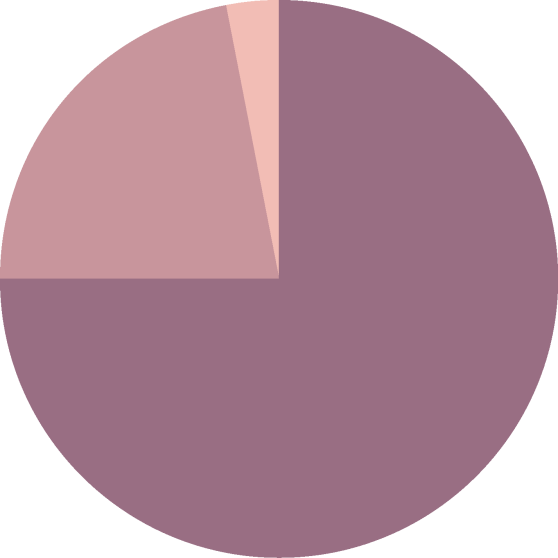
Only a few of those affected confide in someone at the stable, which can sometimes be because they are afraid of feeling ashamed or even that they even might feel like they are to blame for the abuse. The fear of losing one’s position in the riding stable and being portrayed as a someone who is disloyal also plays an overriding role. However, there is often a lack of an independent confidant in stables and riding clubs to whom one could turn with one’s problems. Even more, there are reports about inactivity and defensive behaviour of associations because they fear damage to their reputation.
But, according to Julia von Weiler, this is exactly the point where action can be taken in order to prevent any kinds of abuse. “In stables where it is clearly understood that sexualized violence is not a taboo subject, perpetrators have a much harder time. Contact persons for concerns and needs are essentials. So is access to a telephone helpline - maybe by business cards to take home or posters with QR codes in the stable.
Making abuse public
But how do young people manage to talk about what they have experienced and how to involve people they trust? According to Julia von Weiler, it is so important that victims are able to open up and let someone into their confidence. The first and most important thing to realise is that; “It’s not my fault – I can’t be blamed.” And then it is important to summon up a lot of courage and talk to other people about it. This can be easiest to do in anonymity for example on a telephone helpline.

Crossing boundaries
In the first instance, it is very easy for the perpetrators to cross the boundaries verbally, to make lewd jokes or to drop small sexist remarks. At the same time, people may well take a critical view of this if they overhear it. Nevertheless, they usually don’t say anything because it is supposedly such a relaxed atmosphere. The physical closeness is also considered completely normal. The trainer corrects the position of the leg or makes it clear how the seat should be, how the weight aids or the hands should be used. This usually happens quite obviously in the riding or indoor arena and no one who notices it will be surprised. Julia von Weiler explains: “If these supposedly harmless acts become more frequent, the student will almost certainly not say a word about it. Not at home, for fear of being forbidden to go to the stable, and not at the stable, for fear that no one will believe or help them.”
In this way, perpetrators also overcome their own inner inhibition in many small steps. Every trainer knows that the act is forbidden. These are steps that make them justify the offence to themselves. The child or adult does not perceive it as bad at all. He or she does not react defensively or even recognises that it is wrong.
Overcoming the external inhibitions is also a fairly easy way. The more obviously the touching goes on for too long or the lewd remark is said in casual surroundings, the less those who are there seem to take offence. And even if it is noticed, nothing is said. People think they are imagining it, are too sensitive and ultimately also feel ashamed to bring up such a topic.
This is also what Sophie Jahn experienced on her parents riding school. Most of Sophie Jahn’s childhood was a living hell. Many would perceive her growing up at a beautiful riding school in Sweden, with expensive ponies to ride everyday as a childhood dream, but the four children’s father was abusive and molested them in ways not even imaginable to most people. A hell that no one relieved the children from.
When asked what her advice to people who witness any kind of abuse in the equestrian sport, her answer was: “As an adult I believe you have a responsibility to interfere and be a supportive person. In my case I would have appreciated it if an adult would have reached out to me. Showing that he or she was a trustable person, who could give me a space where I could feel comfortable to talk. Just by venting with someone I would have felt like a heavy weight would have been lifted off my shoulder. Besides this, I would advise people to talk to the school, authorities, police and so on, in order to make sure that they are aware of the situation.”

He walks over and presses my lower back, corrects my legs and makes sure I have the right hold of the horse. [..]. Everything is so tightly controlled, but I take Jerry’s lessons to heart when I ride.
– Sophie Jahn
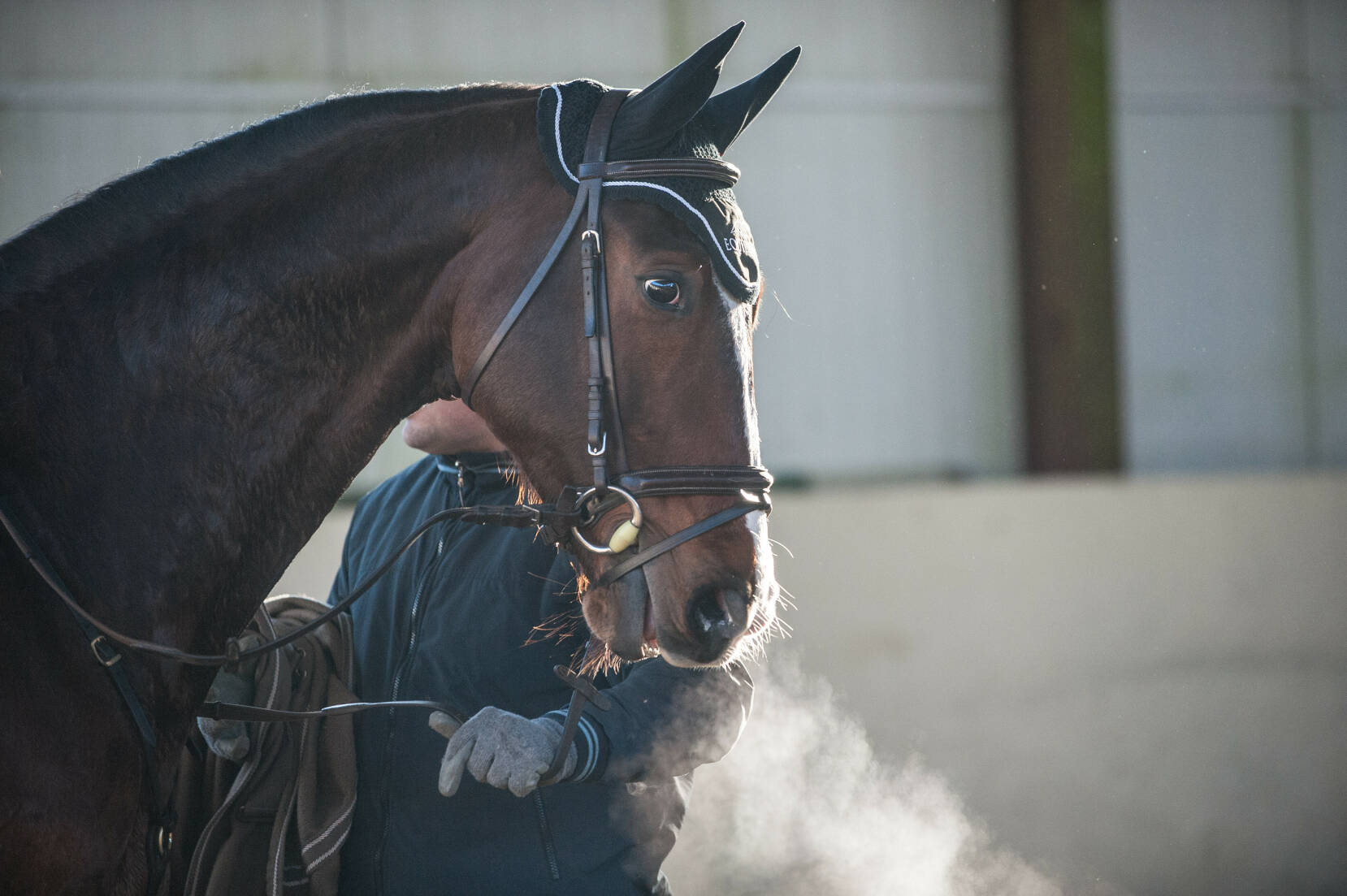
A topic that is anything but nice and that people don’t particularly like to talk about. Nevertheless, harassment and coercion are demonstrably present in equestrian sports as well. The German Equestrian Federation has been committed to combating sexualized violence in equestrian sports for more than ten years.
In other countries, too, there have already been court sentences against perpetrators. In Sweden Sophie Jahn has published a book about her childhood at an equestrian farm, marked by domestic violence, manipulation and sexual assaults by her father.
We have had the chance to ask Sophie a couple of questions, in order to shine a light on this difficult topic. In order to do this, we have also collaborated with expert, Julia von Weiler, a graduate psychologist and the Executive Director of Innocence in Danger (Organisation for the Protection of Children from Abuse Worldwide). We have teamed up with her in order to answer some of the general concerns, such as; How do you face this danger, what can you do and where can you get help?
Creating dependence
According to Julia von Weiler, perpetrators take advantage of the emotional connection between horse and rider in a very targeted way. Sexualized violence does not usually arise out of impulse but is carefully and gradually prepared. The procedure often follows the same pattern. First, offenders look to see which child or adult it could work on. This could be, for example, children who are particularly needy or who highly admire the trainer. In this case, especially needy means that the victims have issues at home, have problems at school or have just moved to a new neighbourhood. These are all reasons why they are looking for connection, recognition and affection.
The perpetrator pays special attention to the child, perhaps grants advantages, takes special care and thus creates a dense, supposedly very trusting atmosphere. Examples on this could, for instance, be that the victim gets to ride their favourite horse more often or there are a few extra lessons. Maybe there is even the prospect of participation in a competition. All these are things horse-crazy children and young people long for. Their dream comes closer.
On the one hand, this creates a certain dependency and the child’s or young person’s desire to please more and more is strengthened. On the other hand, this is already the first step towards blackmail. If one does not participate in this or that, there is the threat of withdrawal of privileges, and children and adolescents would like to avoid that in any case.
Julia von Weiler also explains that the strategy of the perpetrator is to successively create a dependency. Either by exploiting the “sore spot”, by excessive “caring”, isolation through increased granting of privileges or also through pressure, threats and blackmail.
– Abuse in equestrian sports
We never did – talked about it, what Jerry did to us. Every morning, when it was the day after he had abused one or several of us, there was total silence. The silence was like a small hope, that yesterday’s events would never be repeated. But by neither saying nor doing anything, we helped him to continue - Sophie Jahn
Don’t Touch Me!
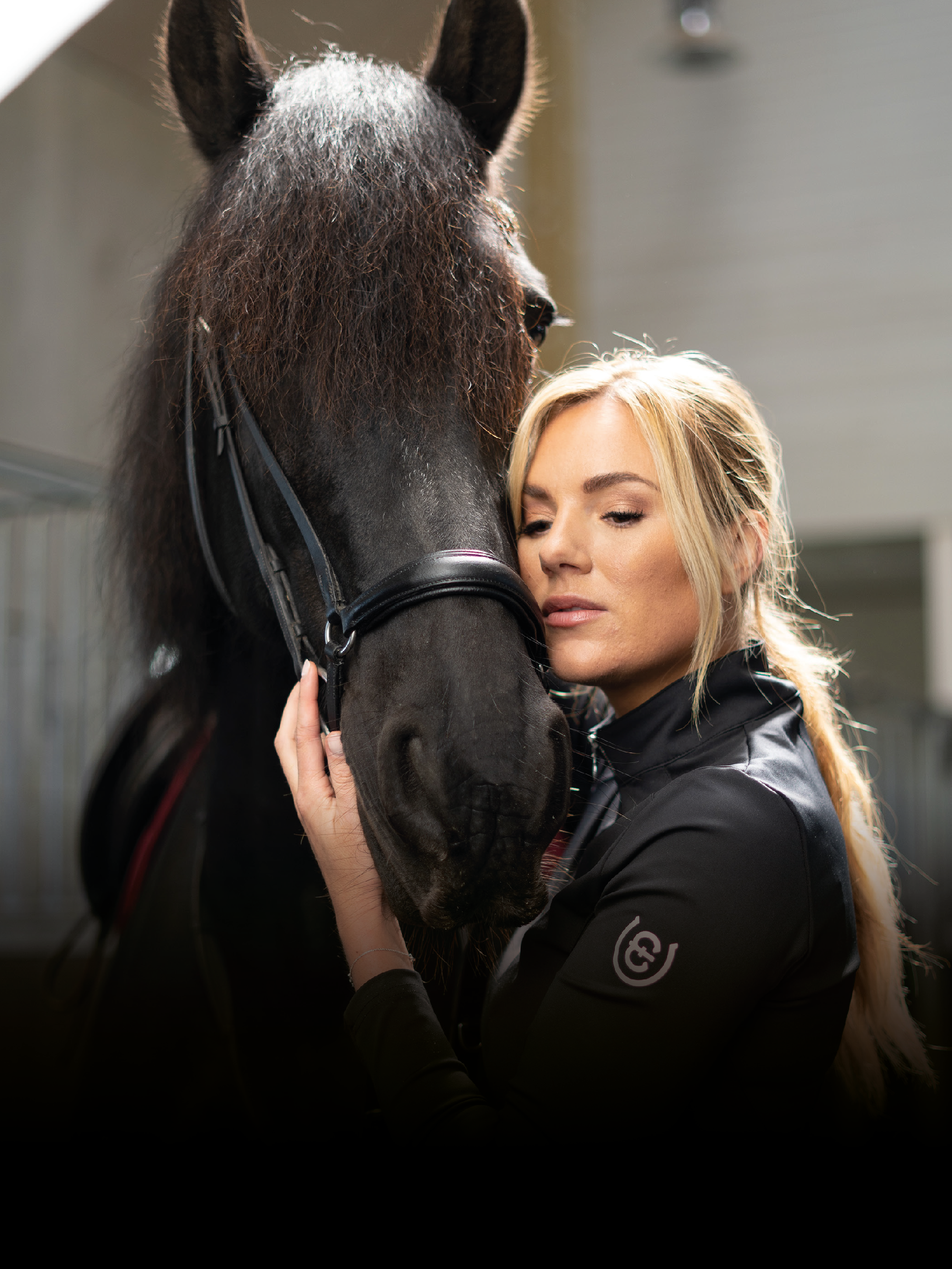
Sources
Leclerc, B., Proulx, J. & Beauregard, E. (2009): Examining the modus operandi of sexual offenders against children and its practical implications. Aggression and violent behavior.
Brackenridge, C. & Fasting, K. (2005): The Grooming Process in Sport: Narratives of Sexual Harassment and Abuse.
Fallstudie “Sexualisierte Gewalt und sexueller Kindesmissbrauch im Kontext des Sports“, 2012.
Deutsche Reiterliche Vereinigung FN
Case study “Sexualized violence and child sexual abuse in the context of sport”, 2019
Riding and the relationship with
the horse are very emotional matters, especially for young people. The
bond to the partner horse is high,
admiration and respect for the
riding instructor are great and the importance of time in the stable is immense. The loss of this world is absolutely unthinkable, especially for young people.
– Sophie Jahn
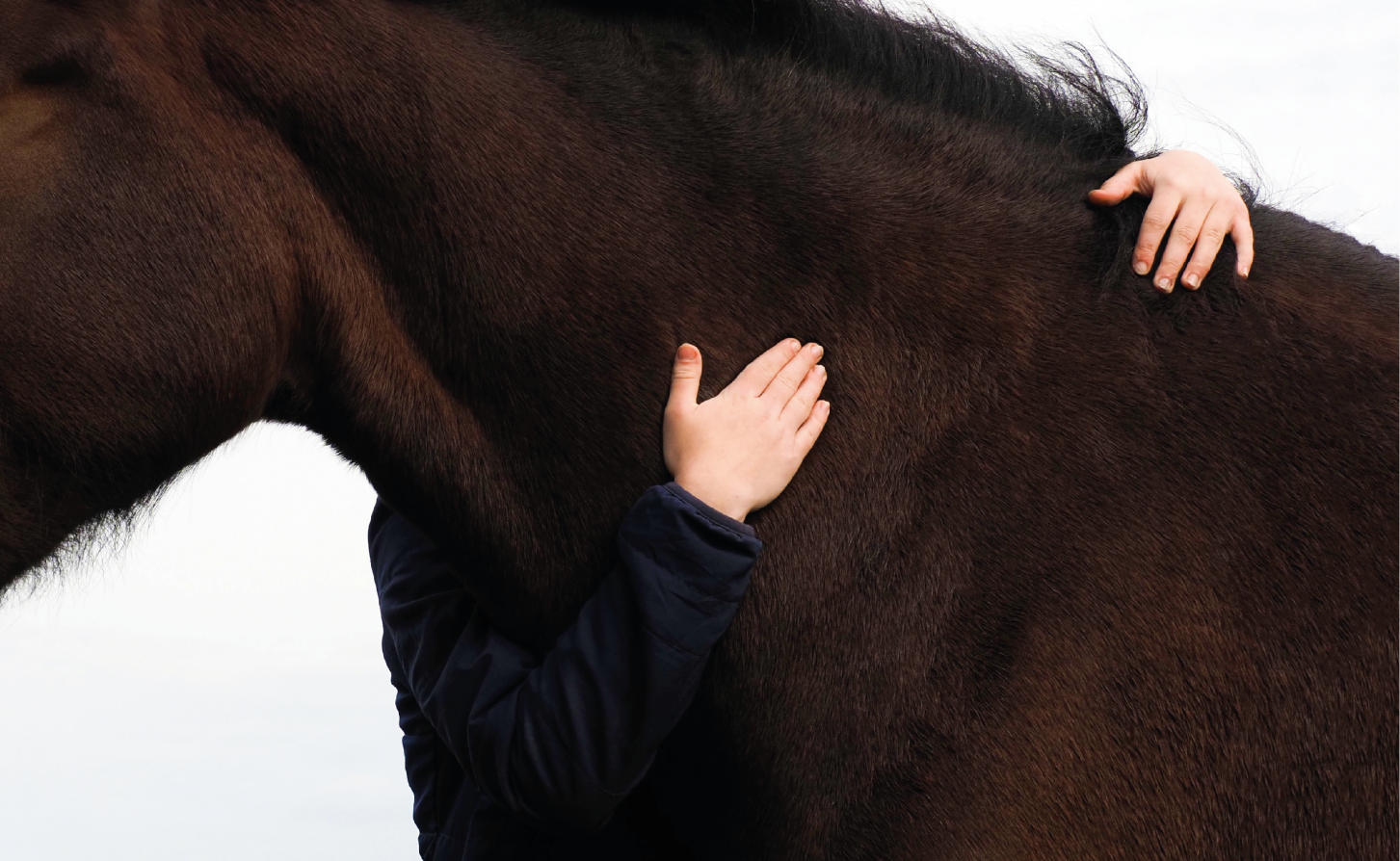
- Question the qualifications of the trainer. Find out whether the association or riding school deals with the problem in a preventive way. Further training, contact persons, and so on.
- Observe carefully how the trainer deals with the riding students. How they talk to each other and deal with physical closeness.
- Be with the children in the stable more often. Don’t just drop them off at the stable and pick them up again after the lesson.
- Listen to the children and take them seriously if they try to confide in you.
- Be attentive to changes in the children’s behaviour. Question and reassure them that they are believed.
- Contact a helpline to get professional help.
What can parents do to recognize and avoid sexualized violence?
- Create a climate of respectful behaviour in the club or stable.
- Look at verbal or physical abuse and do not look away.
- Question who gives lessons as a trainer and with what qualifications, or who is used as a trainer for children and young people.
- As a club board, deal with the issue and appoint a contact person for sexualized violence.
- Take advantage of further training on the topic, for example by the regional sports associations: How do I recognize the machinations of perpetrators?
- Create an environment that is unfriendly to perpetrators. For example, you can put up posters against sexualized violence and abuse and openly communicate the issue.
- Develop protection concepts together with young people.
- Update the statutes of the association: Cross-border behaviour and consequences, establish complaints management.
What can riding clubs and stable owners do to prevent sexualized violence?
Only a few of those affected confide in someone at the stable, which can sometimes be because they are afraid of feeling ashamed or even that they even might feel like they are to blame for the abuse. The fear of losing one’s position in the riding stable and being portrayed as a someone who is disloyal also plays an overriding role. However, there is often a lack of an independent confidant in stables and riding clubs to whom one could turn with one’s problems. Even more, there are reports about inactivity and defensive behaviour of associations because they fear damage to their reputation.
But, according to Julia von Weiler, this is exactly the point where action can be taken in order to prevent any kinds of abuse. “In stables where it is clearly understood that sexualized violence is not a taboo subject, perpetrators have a much harder time. Contact persons for concerns and needs are essentials. So is access to a telephone helpline - maybe by business cards to take home or posters with QR codes in the stable.
Making abuse public
But how do young people manage to talk about what they have experienced and how to involve people they trust? According to Julia von Weiler, it is so important that victims are able to open up and let someone into their confidence. The first and most important thing to realise is that; “It’s not my fault – I can’t be blamed.” And then it is important to summon up a lot of courage and talk to other people about it. This can be easiest to do in anonymity for example on a telephone helpline.

Crossing boundaries
In the first instance, it is very easy for the perpetrators to cross the boundaries verbally, to make lewd jokes or to drop small sexist remarks. At the same time, people may well take a critical view of this if they overhear it. Nevertheless, they usually don’t say anything because it is supposedly such a relaxed atmosphere. The physical closeness is also considered completely normal. The trainer corrects the position of the leg or makes it clear how the seat should be, how the weight aids or the hands should be used. This usually happens quite obviously in the riding or indoor arena and no one who notices it will be surprised. Julia von Weiler explains: “If these supposedly harmless acts become more frequent, the student will almost certainly not say a word about it. Not at home, for fear of being forbidden to go to the stable, and not at the stable, for fear that no one will believe or help them.”
In this way, perpetrators also overcome their own inner inhibition in many small steps. Every trainer knows that the act is forbidden. These are steps that make them justify the offence to themselves. The child or adult does not perceive it as bad at all. He or she does not react defensively or even recognises that it is wrong.
Overcoming the external inhibitions is also a fairly easy way. The more obviously the touching goes on for too long or the lewd remark is said in casual surroundings, the less those who are there seem to take offence. And even if it is noticed, nothing is said. People think they are imagining it, are too sensitive and ultimately also feel ashamed to bring up such a topic.
This is also what Sophie Jahn experienced on her parents riding school. Most of Sophie Jahn’s childhood was a living hell. Many would perceive her growing up at a beautiful riding school in Sweden, with expensive ponies to ride everyday as a childhood dream, but the four children’s father was abusive and molested them in ways not even imaginable to most people. A hell that no one relieved the children from.
When asked what her advice to people who witness any kind of abuse in the equestrian sport, her answer was: “As an adult I believe you have a responsibility to interfere and be a supportive person. In my case I would have appreciated it if an adult would have reached out to me. Showing that he or she was a trustable person, who could give me a space where I could feel comfortable to talk. Just by venting with someone I would have felt like a heavy weight would have been lifted off my shoulder. Besides this, I would advise people to talk to the school, authorities, police and so on, in order to make sure that they are aware of the situation.”

He walks over and presses my lower back, corrects my legs and makes sure I have the right hold of the horse. [..]. Everything is so tightly controlled, but I take Jerry’s lessons to heart when I ride.
– Sophie Jahn

A topic that is anything but nice and that people don’t particularly like to talk about. Nevertheless, harassment and coercion are demonstrably present in equestrian sports as well. The German Equestrian Federation has been committed to combating sexualized violence in equestrian sports for more than ten years.
In other countries, too, there have already been court sentences against perpetrators. In Sweden Sophie Jahn has published a book about her childhood at an equestrian farm, marked by domestic violence, manipulation and sexual assaults by her father.
We have had the chance to ask Sophie a couple of questions, in order to shine a light on this difficult topic. In order to do this, we have also collaborated with expert, Julia von Weiler, a graduate psychologist and the Executive Director of Innocence in Danger (Organisation for the Protection of Children from Abuse Worldwide). We have teamed up with her in order to answer some of the general concerns, such as; How do you face this danger, what can you do and where can you get help?
Creating dependence
According to Julia von Weiler, perpetrators take advantage of the emotional connection between horse and rider in a very targeted way. Sexualized violence does not usually arise out of impulse but is carefully and gradually prepared. The procedure often follows the same pattern. First, offenders look to see which child or adult it could work on. This could be, for example, children who are particularly needy or who highly admire the trainer. In this case, especially needy means that the victims have issues at home, have problems at school or have just moved to a new neighbourhood. These are all reasons why they are looking for connection, recognition and affection.
The perpetrator pays special attention to the child, perhaps grants advantages, takes special care and thus creates a dense, supposedly very trusting atmosphere. Examples on this could, for instance, be that the victim gets to ride their favourite horse more often or there are a few extra lessons. Maybe there is even the prospect of participation in a competition. All these are things horse-crazy children and young people long for. Their dream comes closer.
On the one hand, this creates a certain dependency and the child’s or young person’s desire to please more and more is strengthened. On the other hand, this is already the first step towards blackmail. If one does not participate in this or that, there is the threat of withdrawal of privileges, and children and adolescents would like to avoid that in any case.
Julia von Weiler also explains that the strategy of the perpetrator is to successively create a dependency. Either by exploiting the “sore spot”, by excessive “caring”, isolation through increased granting of privileges or also through pressure, threats and blackmail.

We never did – talked about it, what Jerry did to us. Every morning, when it was the day after he had abused one or several of us, there was total silence. The silence was like a small hope, that yesterday’s events would never be repeated. But by neither saying nor doing anything, we helped him to continue - Sophie Jahn
– Abuse in equestrian sports
Don’t Touch Me!
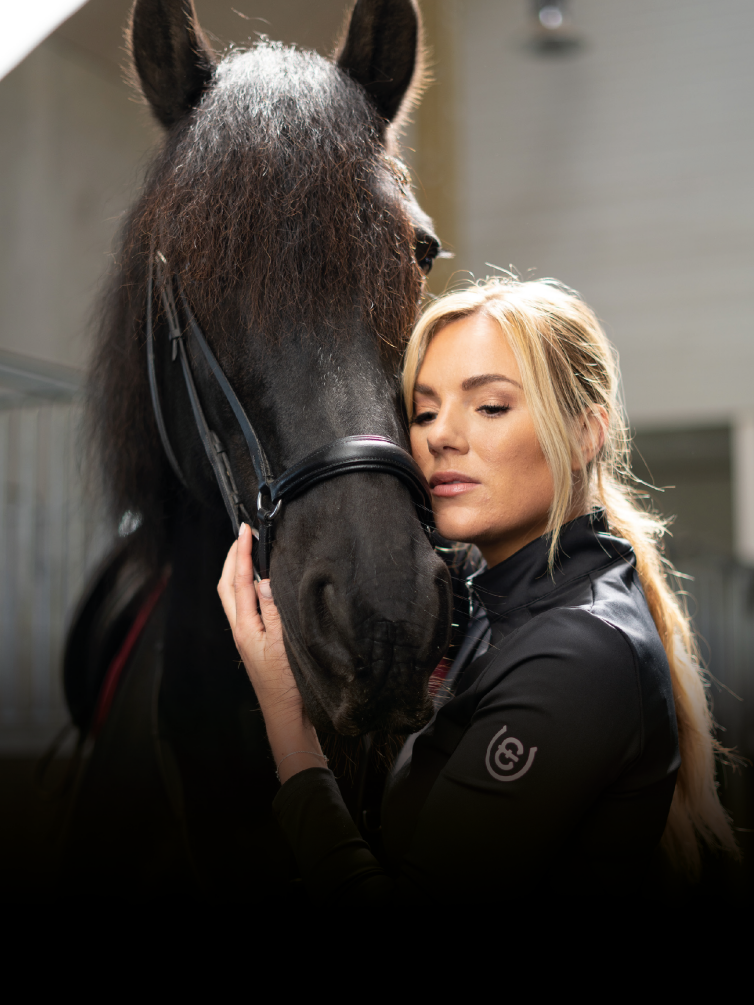
It needs to be the norm for the trainer to ask before correcting by touch. Things needs to be able to be addressed openly. Sexualized slogans must not be accepted or ignored. All this creates an atmosphere that will make it much more difficult for an offender to prepare or commit an act.”
If sexualized violence becomes public, there will always be a division. There are those who will be supporting the victim, and then there are those who have been blindsided and those who defend the perpetrator because they don’t even want to imagine that something like that could have happened. You will have to be aware of this grouping occurring as it does in almost every abusive case. Either way, it is very important to seek psychological help.
Even though it is difficult and tough to make stories of abuse public, it is extremely important. This is also one of the reasons why Sophie decided to share her story with the entire world. “What drives me is telling a story that should be told. As a kid I thought I was the only one suffering and that made me feel like I was carrying a big secret on my shoulders. The older and freer I got, the more I realised that this is a universal problem and that there’s a stigma around it. By taking the lead and being open about where I come from, I believe I can encourage others to get out of their situations or help someone who needs support.”
Follow up on the suspicion
How do you deal when a certain suspicion arises that something is wrong? When you have an uncomfortable feeling in your gut.
In any case, you should not trivialize an uneasy feeling but take it seriously. Taking it seriously means, in the first instance, that you start dealing with it. Ignoring it is by no means helpful. In cases like these, most people’s greatest fear is accusing someone unjustly. Therefore, it is important to talk to someone who knows about the issue. If there is a trusted person in the riding stable or club, that is certainly a good place to start - otherwise the advice is to call a telephone helpline. There is no general guideline for the right behaviour, because all cases are individual and different. If a suspicion is confirmed, it is important to carefully consider all further steps.
In close relation to this, Sophies advice for other people in a similar situation as hers, is: “Finding ways of venting your feelings without putting yourself in danger. If you have friends that you trust, talk with them about how you feel and what’s happening in your life. It will be a relief to put words on your thoughts and emotions. Furthermore, I highly advise you to reach out to an adult who can be a good listener and also advise you on how to handle the situation. Something that helped me was writing a diary. It felt good getting things on paper and being able to go back and remember what happened. A last recommendation would be to look into an organization that helps people like you and ask for support through them.”
Lastly, we wish to emphasise that fact, that even though this is a difficult topic, it a very important one. And one thing is certain; looking the other way is not the solution.

When I sneaked in with his morning coffee, a young horse might be in his room who had been standing sleeping and pooping on the carpet during the night.
75% | Woman 22% | Men 3% | Other
Gender of the victims
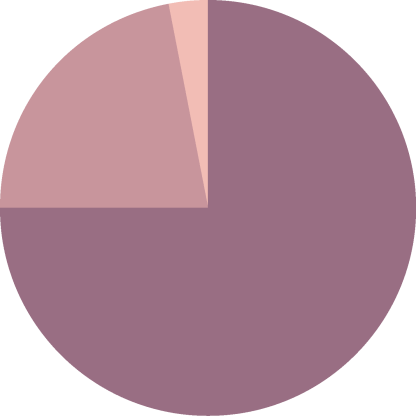
Of all the people who have experienced sexual assault in sports, 60% has been expoxed to it often, 28% multiple times, and 3% one time.
60% | Often
28% | Multiple times
3% | One time

Where does
sexualized
violence begin?
- Suggestive looks
- Derogatory comments
- Unpleasant touching
- Letters, e-mails or messages with sexual content
- Exhibitionist acts
- Sexual assault
- Rape
